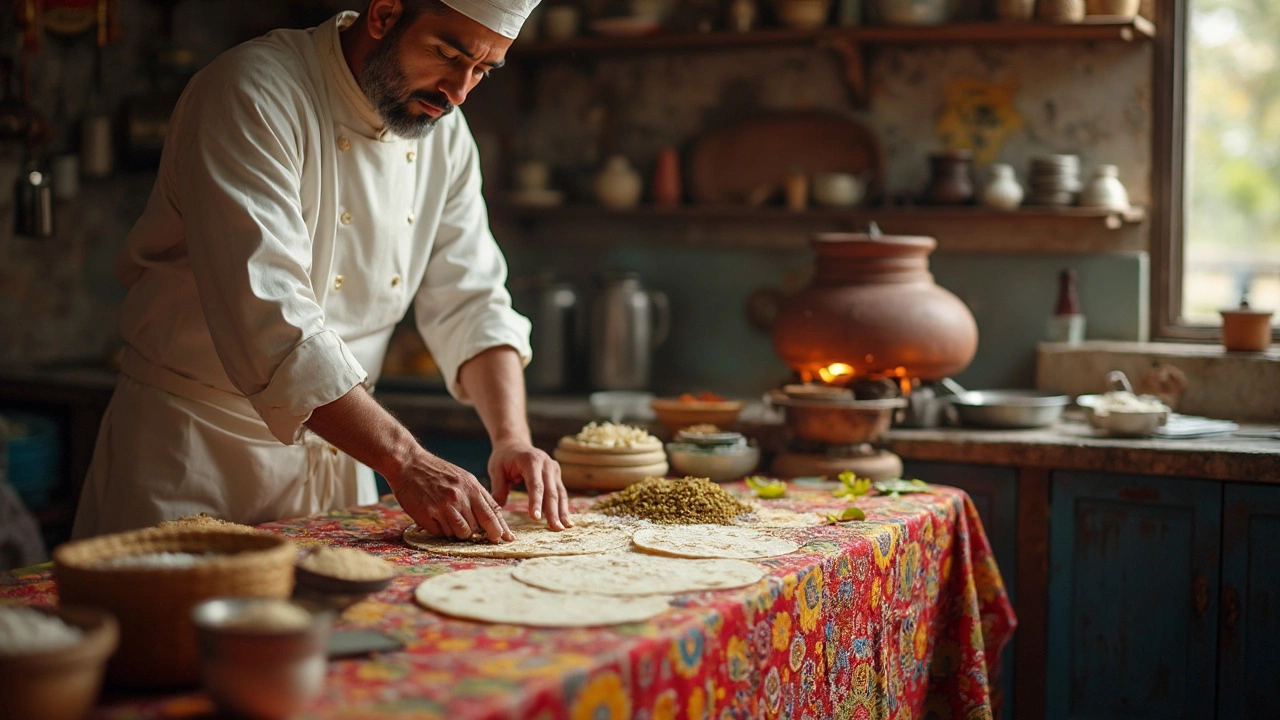Daily Roti Made Easy – Essential Tips for Soft, Fluffy Indian Flatbread
When working with daily roti, a thin Indian flatbread that’s a staple at most meals. Also known as chapati, it relies on a simple mix of flour, water, and sometimes a pinch of fat. A well‑made roti should be soft, slightly crisp on the edges, and capable of puffing up on a hot tawa. Achieving that every day means understanding the role of baking soda, a leavening agent that can lighten the dough and the timing of oil, which adds moisture and flexibility to the dough. These three ingredients form the core of most roti‑making hacks you’ll find below.
Key Factors for Perfect Roti Every Day
First, the flour matters. Whole‑wheat atta provides the right gluten structure, but the protein level can vary by brand. A medium‑protein flour gives enough stretch without making the bread tough. Second, water temperature influences gluten development; lukewarm water helps achieve a smooth, non‑sticky dough. Third, kneading technique matters – a 5‑minute hand‑knead or a 2‑minute stand‑mix creates an even network of gluten, which is the secret behind a roti that puffs nicely. The more uniform the dough, the easier it is to roll thin without tearing.
Fourth, the timing of oil is crucial. Adding a tablespoon of oil per two cups of flour after the dough has rested for 15‑20 minutes coats the gluten strands, reducing surface tension and preventing the roti from snapping back while cooking. This step also adds flavor and contributes to a softer bite. Fifth, a pinch of baking soda (about ¼ tsp per kilogram of flour) can raise the pH slightly, weakening the gluten just enough to let the roti expand when it hits the high heat of the tawa.
Sixth, rolling technique decides puff potential. Roll the dough into a ball, let it rest, then flatten with a rolling pin using gentle pressure from the center outward. Avoid pressing too hard; the goal is a uniform 6‑mm disc. A dusting of dry flour on both sides prevents sticking while keeping the surface dry enough for a crisp exterior.
Seventh, cooking temperature is the final piece of the puzzle. Pre‑heat the tawa until a few drops of water sizzle and evaporate instantly. Place the roti on the dry surface; it should bubble within 10‑12 seconds. Flip once, then press gently with a clean cloth or spatula. The second flip often triggers puffing as steam builds inside. If the roti doesn’t puff, a quick press with a cloth while it’s still on the tawa can help it burst open.
Eight, after cooking, keep the roti covered in a clean kitchen towel. The trapped steam finishes the cooking process, keeping the bread soft for the next bite. If you’re serving a batch, stack them in the towel and reheat briefly on the tawa before serving – this restores the fresh‑out‑of‑the‑oven feel.
Understanding these steps shows how daily roti encompasses dough preparation, ingredient timing, and heat management. It requires the right balance of gluten (from flour), moisture (from water and oil), and leavening (from baking soda) to produce a soft, fluffy flatbread. Each factor influences the next – good gluten needs proper water, which benefits from the right resting time, which in turn lets oil and soda work effectively.
Below, you’ll find a range of posts that dive deeper into each of these topics. From troubleshooting flat, non‑puffing chapatis to deciding whether baking powder or soda is better, the collection covers the most common challenges home cooks face when they aim to serve fresh roti every day. Keep reading to turn these tips into habit and make your kitchen a reliable roti‑making zone.

Balancing Your Diet: Ideal Daily Chapati Intake
Chapatis are a staple in many diets, but how many should you eat each day to stay healthy? This article explores the ideal daily intake of chapatis based on factors like BMI, activity level, and calories in one roti. Learn how to balance your diet using a calorie calculator and understand the importance of this popular food in local diets.